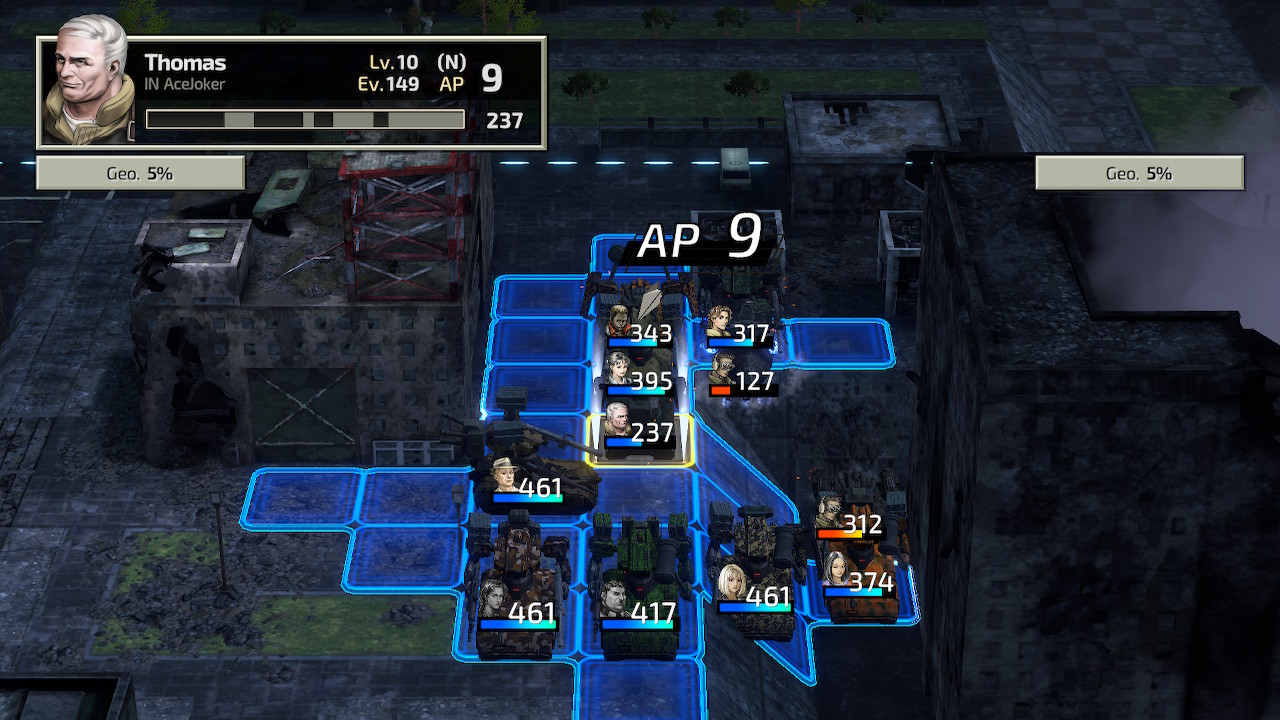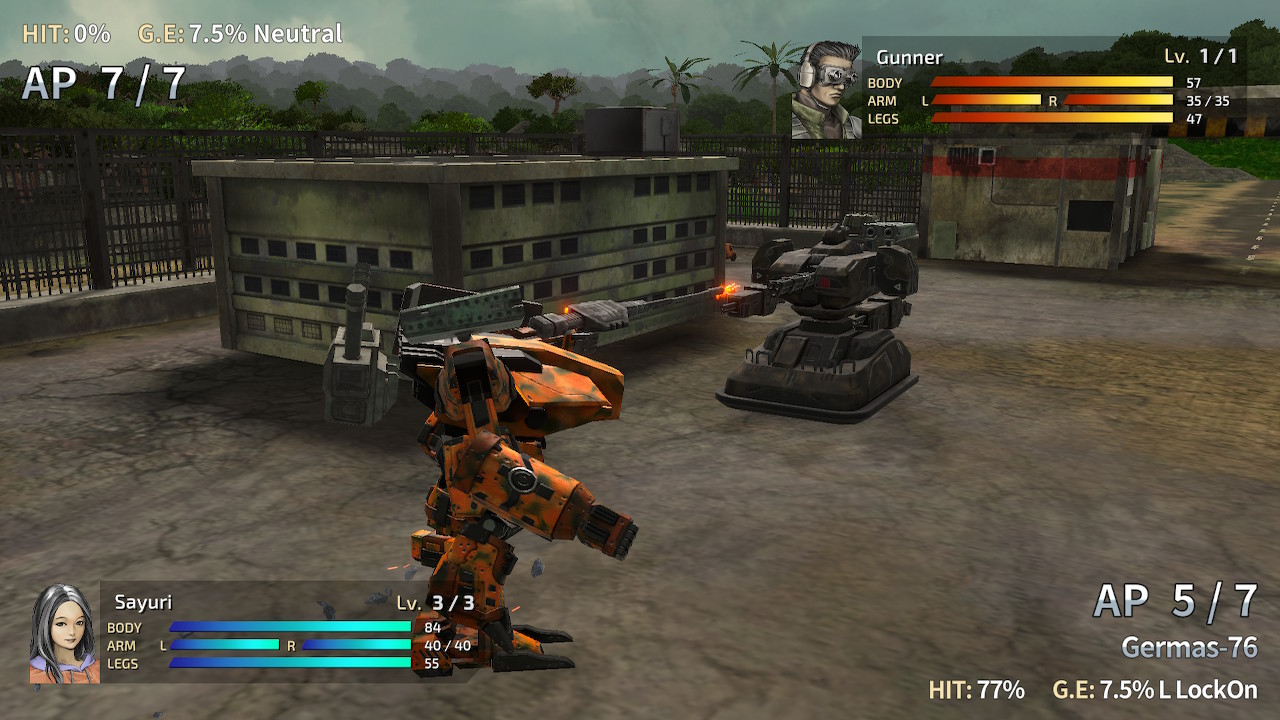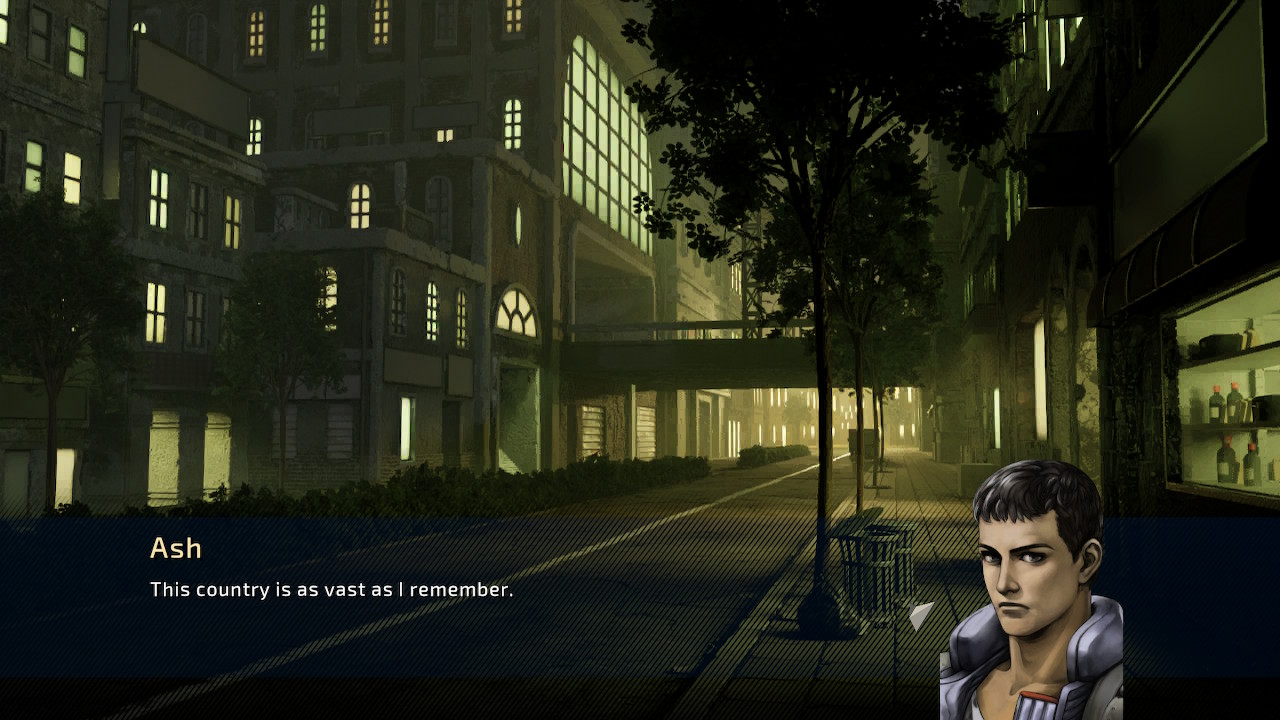Well, it’s finally here, and oh, are there mechs. Front Mission 2 has landed outside of Japan for the first time as part of Forever Entertainment’s continuing quest to rebuild the classic Squaresoft series. It was originally released in 1997, so it’s been a long wait for an official release for the rest of the world. But is it worth the wait? Let’s fire up the ol’ wanzer and find out!
Set 12 years after the events of Front Mission 1st: Remake, Front Mission 2: Remake moves away from Huffman Island and its wars to the internal-conflict-ridden country of Alordesh. In the unstable nation, Ash, Thomas, and Lisa are peacekeepers for the Oceania Cooperative Union when a revolutionary group upends the establishment, throwing the country into turmoil and stranding any OCU operatives who survive the surprise attacks. Cut off from all support, the protagonists must find a way to survive. But try as they may to flee, they only become more stuck in the spiderweb of Alordesh’s affairs.
Front Mission 2: Remake is a grid-based tactical RPG in the vein of Final Fantasy Tactics, Fire Emblem, or, of course, Front Mission 1st. Those who’ve played Front Mission 2: Remake’s predecessor should find many similarities but also some significant additions that substantially switch things up. It’s a serious challenge, and failure to master the new mechanics makes for a rough time.
Namely, the action points system is the defining feature of Front Mission 2: Remake. Without going into too much detail (because it’s thick with details), a unit is affected by units surrounding it. Friendly adjacent units provide more AP, and enemies reduce AP. Having action points is much more critical when it’s the other side’s turn because each counterattack or defense costs AP, and if it runs out, that unit is extra vulnerable. These rules apply to both you and enemy forces. So, if you gang up on a unit, their defensive capabilities are diminished or non-existent if you can get enough of your people around them. Adjacent units also supply other bonuses and adverse effects, as does having more or less AP during an attack, so keeping your units together helps you keep it together. It washes out as a fluid system where the advantage can slide back and forth as you and the enemy make moves to surround the other, much like the ancient board game Go, but with guns. That’s a simple explanation of a complex system, and there’s plenty more that goes into tactically using it to your advantage.
However, the randomness of combat is off-putting and frustrating. Each wanzer has four body parts — a head, two arms, and legs — each with its own HP, and you don’t get to pick which parts your attacks hit. When my attacks repeatedly went awry, I found myself targeting my head with my palm. You also have special abilities that supposedly help, though they often trigger when you need them the least and many are poorly explained as they didn’t do what the description led me to believe. Often, your accuracy is reduced or the enemy’s is accelerated to 100% for deep, esoteric, computational reasons. Granted, part of the strategy is about mitigating the randomness. But there’s only so much you can control. Many battles were extremely close in my experience, and it’s frustrating that chance can be the difference maker in the end, especially as the fights often take over an hour.
Thankfully, there are substantial tutorials that explain all of this and more. I can’t stress enough that you should watch all of them, as some aspects you’d expect to be simple aren’t, and you won’t get far without understanding them. It’s a lot to take in. Even with the explanations, it still takes a lot of trial and error to figure out what you’re supposed to be doing, and not everyone has the patience for that.
Narratively, Front Mission 2: Remake takes a different route from the typical war story. In the midst of an an attempted revolution, the sides aren’t easily defined. The people of the country don’t care for the OCU as overlords, and some of your allies have sympathies for the revolutionary army. Not that your crew is necessarily the good guys, but there are also plenty of concerns about whether revolutionary leader Ven and his plans to overthrow the government are best for Alordesh. Though the games take place in the future, the stories of the Front Mission series feel as though they happened a long time ago, minus the wanzers. Front Mission 2: Remake is a complex exploration of the quagmire of modern warfare, where all possible outcomes are far from ideal, and it’s emblematic of wars in the ’90s and since then.
Ash is Front Mission 2: Remake’s likable protagonist. His main aim is merely to keep all of his friends alive, though eventually, you find there’s more to him than that. He’s the heart of the story when others’ motives are less clear, as Thomas’s and Lisa’s are. Thomas is a veteran of combat, and though he tries to convince Ash that he’s merely a fellow OCU operative stuck in Alordesh, he doesn’t seem to be entirely truthful. Lisa, meanwhile, is searching for something, though she’s elusive about what. The story’s perspective begins split as each of these three is scattered across the country in the chaos that ensues once the revolutionary army begins making its sweeping moves. Many of the other characters get their time to shine, too, my favorite being Roswell, whom I affectionately refer to as Timothy Chalamech (for his resemblance to actor Timothy Chalamet).
Unfortunately, the beginning stages of Front Mission 2: Remake‘s story are repetitive, bouncing back and forth between the same few locations. It takes about 20-ish hours, about halfway in, to get going. And to call Ven a recurring antagonist is like saying the sun occasionally comes up. He appears in more battles than not, and even when it appears you’ve finally taken him down, he wriggles his way free and escapes to fight another day — that day usually being tomorrow. For reasons like these, the story comes across as muddled and limited in achieving its aims.
Performance issues also hold Front Mission 2: Remake back. The biggest problem is that the game can overheat the Switch, causing it to freeze. Thankfully, you can save during battles, and as the later battles take well over an hour, you don’t want it freezing at a point where you’re certain you have the mission in the bag, as happened to me a couple of times. The graphics are significantly overhauled and scaled up from the original title, but it’s still difficult to comprehend how a PSX game can run so poorly on a modern console. There are stutters in the shop menu, too, as loading each mech’s appearance takes a few seconds, as if it’s too taxing for the hardware. The issues don’t totally break the game. But those who have the option of picking up Front Mission 2: Remake on another platform should at least consider waiting for the likely release there.
The visuals are pretty, though there are some ways Front Mission 1st is superior. Front Mission 2: Remake is beautiful when it takes you to a city, letting you witness the imposing large buildings earlier in the game be reduced to smoldering rubble as the war progresses. Here and there, you can see a sign in Bengali (as Alordesh in the future is Bangladesh in the present) as a nice touch of authenticity. However, too many battles take place in the bland countryside. The environs aren’t as exotic as Huffman Island was, and some of the small details of the first game didn’t make it into this one. The Jun Suemi character designs are excellent, as always, conveying so much personality and grittiness through appearance alone. The wanzers in Front Mission 2: Remake have a more refined, official look than in the first game, many featuring military camo patterns, though Cordy shows her wild side with a leopard print design. Though the mechs’ appearance is upgraded to a smooth modern style (no ‘90s jaggies), if you’ve ever played a PSX Squaresoft game, the animation style should look familiar.
The controls and interface are awful in ways I couldn’t previously comprehend for SRPGs. In the default ¾ view, which is, unfortunately, the best for viewing the battlefield at a glance, it usually took me several tries to get the bouncy cursor to the space I wanted. Thankfully, you can rotate the camera, but it’s harder to get the full scope of battle in the straight-on view. It takes too many button presses to switch to another friendly unit or check the stats for enemies. There is also a maze of menus when setting up your wanzers, and moving through them is exhausting because there’s a loading screen each time you enter or exit the shop.
Thankfully, it sounds great. Composer Noriko Matsueda returns from Front Mission 1st with an eclectic selection of tracks. With the secret ops feel of the game, some of the songs reflect a more secretive mood with slower, more intricate melodies. There are, of course, the bombastic themes during major daytime battles. But the best are the wild tunes that play in towns. The chaotic clamor of the theme at Daukandei gives the feeling that there’s a party about. Some bars feature a raucous blues rock song with bizarre vocals that lets Matsueda dig into her jazz roots. The composer’s music is given an excellent high-definition upgrade and feels as though it’s how the music was originally intended to be presented. There’s a resemblance to other music from ‘90s Squaresoft games, and Front Mission 2 Remake’s soundtrack is yet another classic from that period.
The tough thing about Front Mission 2: Remake is that it doesn’t present itself well upfront. Ultimately, those who push through will be rewarded, but it takes a lot of patience to get there. In the end, despite my complaints, I enjoyed my time with this game. Much like Front Mission 2: Remake’s global release, in the areas that matter, it eventually comes around, even if it takes a long time to get there.





